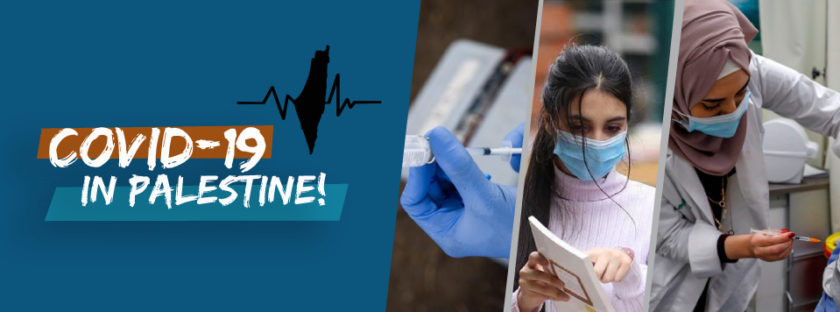Coronavirus in the West Bank and Gaza I COVID-19 in Occupied Palestinian Territory
Pre-pandemic
Just like many other countries in the world, Palestine was not prepared to face a rapidly spreading virus like COVID-19. There is no doubt that Palestine lacks medical equipment & medical staff.
The West Bank identified its first cases in Bethlehem city on March 5, 2020 when a group of Greek tourists who were staying in one of the hotels tested positive for COVID 19. The Gaza Strip identified its two first cases on March 21, 2020. On August 24, 2020 cases outside of quarantine centers were confirmed and recorded.
Palestinian Health Sector vs. Coronavirus!
Workers in the health sector in Palestine have formed the first line of defense in the face of Coronavirus and Covid 19 disease. This sector is also considered one of the most influential and extended operational sectors in Palestinian society. These groups operate and provide health services through health institutions operating in Palestine, namely: the Palestinian Ministry of Health, military medical services, private health associations from civil society institutions, the United Nations Relief and Works Agency for Palestine Refugees (UNRWA), as well as the private medical sector.
Palestine ranks number (113) in health services worldwide, according to the International Human Development Report issued by the United Nations. Although the Palestinian Authority allocates a large part of its resources in the GDP to the health sector, health services are still below the required level.
The Impact of Coronavirus on the Palestinian Health Sector Workers
Considering the Coronavirus crisis, the spread of Covid-19 disease, and the multiplication of the number of infected, the burdens on workers in the health sector in Palestine have increased.
There is no doubt that the high incidence of Covid-19 disease and the speed of spread, despite all the prevention, quarantine, and home efforts, had a great impact on the medical sector in Palestine – especially as the numbers among the infected increased dramatically.
These daily increasing rates constitute a big problem that has the potential to get out of control, considering the lack of capabilities and resources and the lack of means of health protection.
Figures and Statistics regarding the Health Sector in Palestine
With a quick look at the basic health care data in Palestine, we find that the number of hospitals in Palestine has reached 79 with a capacity of 5,487 beds. There are 25 government hospitals with a capacity of 2,979 beds.
The number of non-governmental hospitals has reached 54, with a bed capacity of 2,508 beds, representing 45.7% of hospital beds. As for primary health care, the number of primary care centers in Palestine has reached 750 health centers, including 603 clinics and health centers in the West Bank, and 147 centers in the Gaza Strip. The percentage of government centers, of which approximately 61.3% of the total health centers in Palestine.
As for workers in the health sector, the number of medical doctors registered with the Syndicate for the year 2012 in Palestine was 8,810, where the rate was 2.2 per 1000 of the population (2.3 doctors per 1000 residents of the West Bank compared to 1 doctor for every 1,000 residents of the Gaza Strip). While the number of registered nurses in the Syndicate for the year 2012 in Palestine was 11,633 nurses, where the rate was 2.7 nurses per 1,000 population (2.2 nurses per 1000 population in the West Bank, 3.4 One male / female nurse for every 1,000 residents in the Gaza Strip).
The latest statistics indicate a significant increase in the percentage of workers in the health sector, as the number of working doctors and specialists reached 10,562. However, the ratio of hospitals and beds to the population has not changed much.
Israeli Obstacles
The practices of the Israeli occupation and the permanent violations of Palestinian health rights are the most important reason behind the weakness and inability to truly mobilize the Palestinian health sector. Since the first Palestinian Intifada, there has been a targeting of Palestinian health facilities and ambulances by the Israeli forces and impediments on the entry of medicines and foreign medical delegations to the cities and villages of the West Bank and Gaza Strip.
The Israeli checkpoints have spread in the West Bank to approximately 500. Additionally, the separation wall that was built around West Bank towns and villages, has constituted a major obstacle for residents to access medical services, especially in emergency cases. Many people that were in dire need of emergency treatment lost their lives while awaiting the opening of an Israeli checkpoint.
The wars on the Gaza Strip between 2008 and 2021 posed a great challenge and confusion for the health sector, as medical teams working in the Gaza Strip were unable to offer medical care to a large number of victims and wounded simultaneously.

